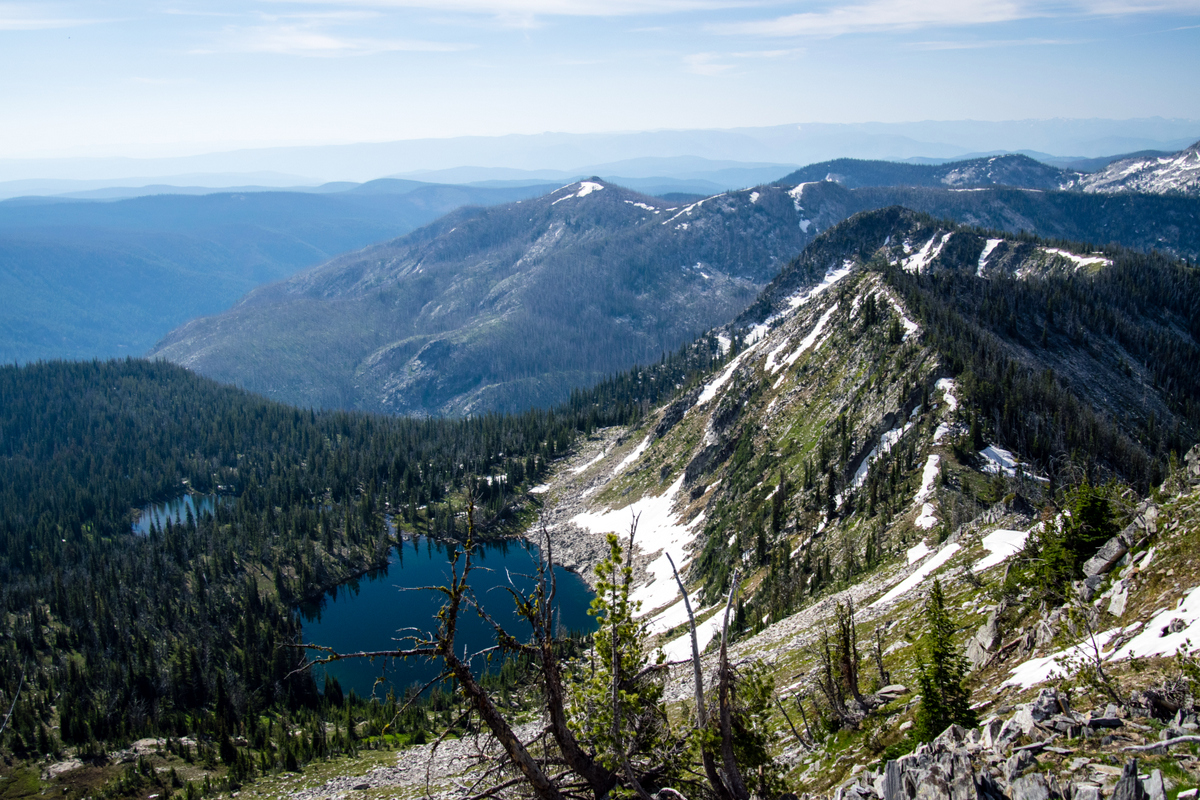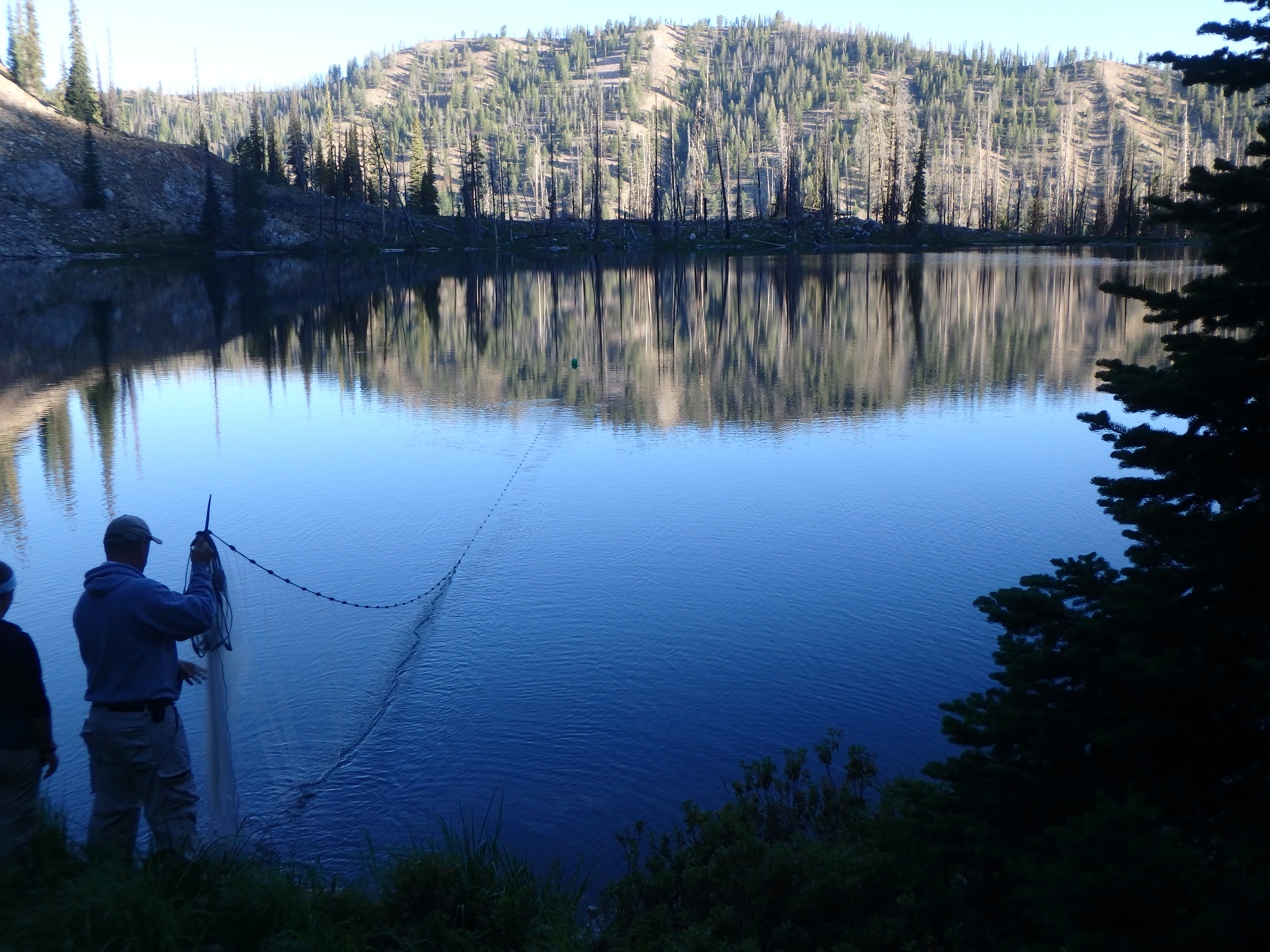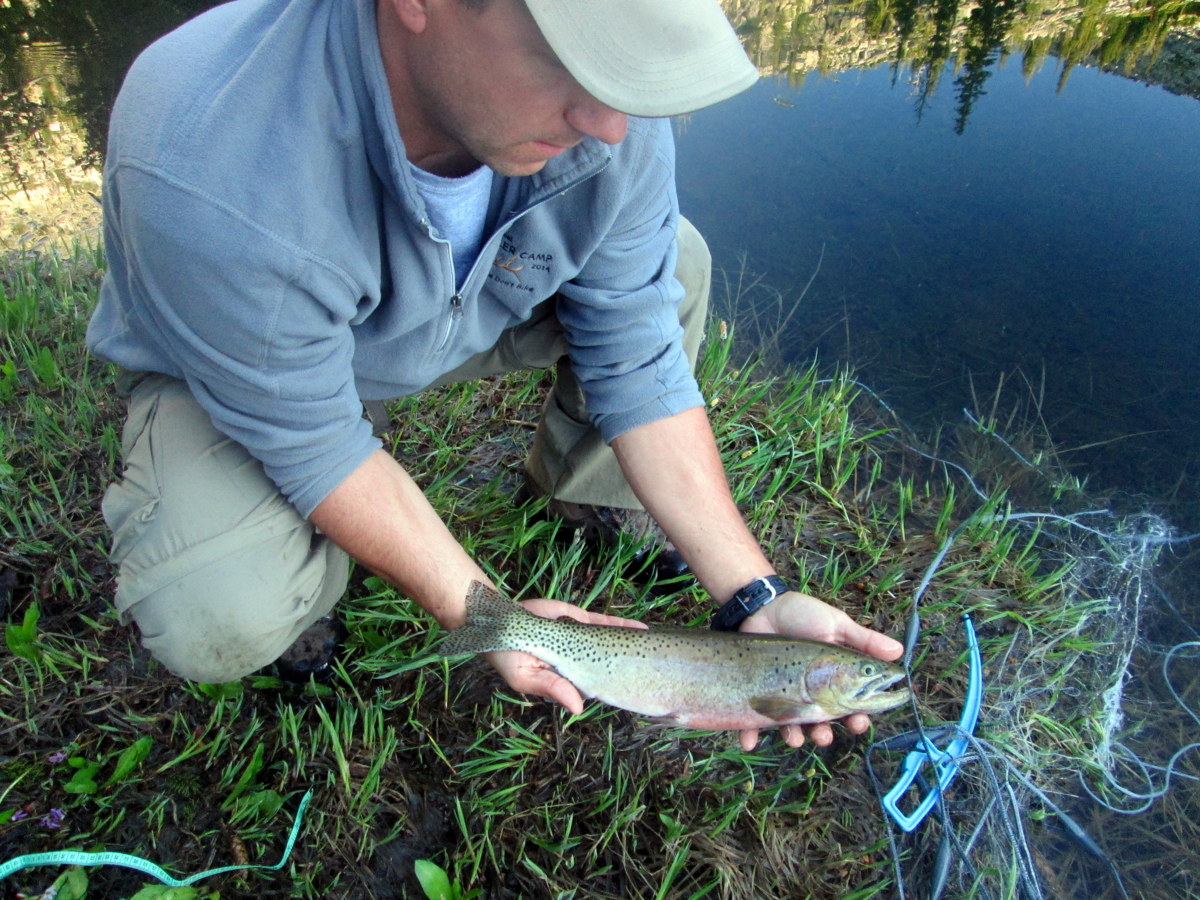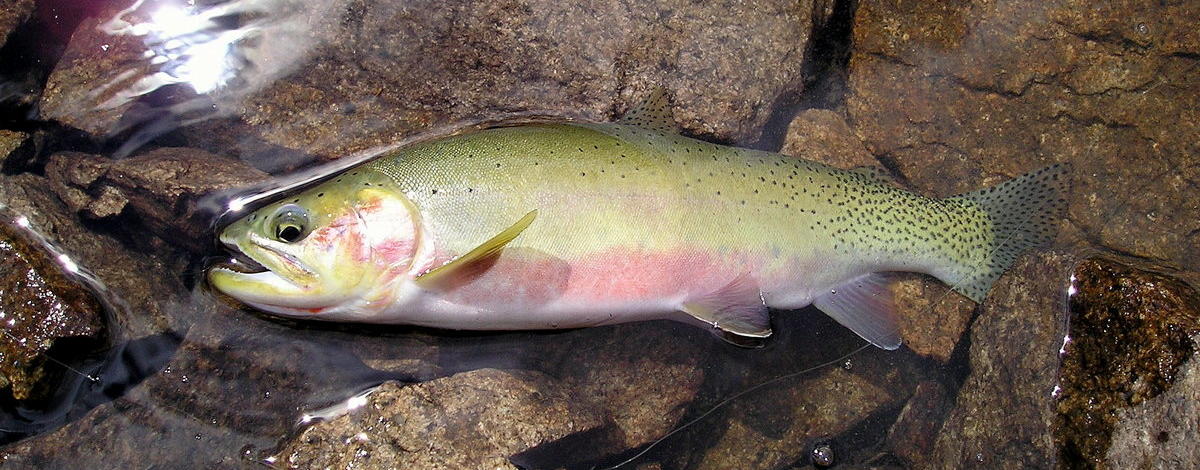Biologists from the Idaho Department of Fish and Game have researched how to improve stocking alpine lakes for decades,and in recent years have been experimenting with “triploid” trout to see if they might be a better fish for anglers and fisheries managers.
Most trout are “diploid”, meaning they have only two sets of chromosomes (DNA). The most common trout stocked into Idaho alpine lakes are the Westslope Cutthroat Trout, but triploid cutthroat have not been stocked much. Triploid trout don’t reproduce, so they can be a good option in watersheds where managers don’t want hatchery cutthroat to interbreed with native trout living downstream.
Triploid trout also could potentially grow larger than their regular diploid counterparts because sterile fish do not spawn, which requires a lot of energy that can be transferred to growth in some situations. Biologists also want to know if triploid cutthroat will produce the same fishing experience as typical stocked cutthroats, which means they experimented and compared growth, survival, and catch rates across several lakes.
It sounds simple, but this kind of head-to-head study in Idaho’s remote backcountry takes years, and it requires multiple visits by research crews hauling equipment into waters that are usually difficult to access.
Lakes provide a unique experience
Anglers who trek to Idaho’s alpine lakes find a unique and highly rewarding experience that includes solitude, dramatic scenery, and a wild feel rarely found in other waters. Plus, you might catch a species you may not see anywhere else, such as grayling.
Thousands of years ago, receding glaciers carved out deep scars in the mountains that eventually became mountain lakes. These holes in the landscape filled with snowmelt and rain, but were often inaccessible to the fish downstream. As a result, most of Idaho’s backcountry lakes were historically fishless.
Trout were first stocked into backcountry lakes as early as the late 1800s as settlers began to arrive in Idaho. However, stocking didn’t become widespread until the 1920’s. Over the decades, Fish and Game stocking practices have been slowly refined as new information becomes available, but the tradition of providing great alpine lake fishing continues.
Making a triploid
After planning which lakes to include in the triploid study, the next big step was to produce some triploid Westslope Cutthroat. Idaho’s Westslope Cutthroat brood stock lives way up north at the Cabinet Gorge Fish Hatchery. In late May, biologists worked with fish culture staff to make a batch of triploid cutthroat alongside the usual annual spawning for cutthroat stocking across the state. The cutthroat brood stock provide the eggs and milt needed to spawn each year’s batch of new cutthroat eggs destined for stocking across Idaho.
After pressure treatment, the eggs are disinfected, rinsed, and transferred to an incubation tray where they will sit for several weeks before hatching. In about three months, they will be almost 1.5 inches long and ready for stocking into alpine lakes.
For a very short time after fertilization, trout eggs have three sets of chromosomes (2 from female, 1 male) before the newly fertilized egg kicks out the extra set. Using a high water pressure chamber, biologists can interrupt that process. The result is an egg that keeps all 3 sets of chromosomes – making a triploid trout egg.
Batches of normal diploid eggs get ready for spawning at the same time. Cutthroat hatched from normal diploid eggs will be stocked at the same time into one set of several lakes. Sterile triploid cutthroat will be stocked into a second set of lakes to compare how they survive several years later.
Several months later in September, the eggs are now tiny cutthroat trout about 2” long. Since biologists won’t be able to tell these fish apart from other trout already living in the study lakes, they will need to be marked. An adipose fin clip provides a clear mark that can be easily identified years after the fin is removed.
Three months after hatching, the cutthroat will be about 1.5” inches long. They will get an adipose fin clip (like a hatchery steelhead) before they are stocked by airplane into some carefully selected backcountry alpine lakes. Several years later, biologists collected trout from each lake, looking for those with the adipose fin clip. They can then compare the size and numbers of these marked cutthroat trout in all the study lakes. This information will show whether the fishing quality at lakes stocked with triploid cutthroat trout is the same, better, or lower than lakes stocked with regular diploid trout.

Biologists usually face a long, difficult hike to collect fish in alpine lakes. Trips require specialized gear like nets and small inflatable boats, making backpacks heavy.
Getting our hands on fish is the first step in answering stocking-related science questions. Collecting trout from mountain lakes typically means multiple days spent in the backcountry. That often includes several steep, long hikes with a heavy pack. Besides the usual camp gear and food, biologists need to pack specialized gear like nets, GPS, thermometers, weigh scales, sonar and even small boats to get the data they need.

After a long hike, biologists work to sample fish. Here, biologists use a small inflatable boat to set a gill net. This net is the main tool to collect fish that will answer several research questions about trout in alpine lakes.
After the hard work of getting there, biologists need to sample each lake. They hope to find several of the marked trout that were stocked years before. Using a small gill net, they collect trout to compare survival and growth of fish across the various lakes included in the study. Biologists carefully examine each trout caught, looking for those with the adipose fin clip, keeping notes on species, length, weight, and age of each trout. All this information will be analyzed with statistics to make a scientific judgment on how lakes stocked with regular diploids compare to those with triploid Westslope Cutthroat Trout.

Biologist Dennis Daw pulls in a gill net in the early morning hours. The fish he catches will provide important information on the trout population in the lake including size, age and growth rates to help make better decisions about stocking.
So what did we learn? After surveying 52 lakes and crunching all the numbers, it turns out that fishing quality was nearly identical between lakes with normal diploid cutthroat and those stocked with triploid cutthroat trout. On average, the number of fish caught per hour (i.e., catch rate) was pretty much identical between lakes with diploid and triploid trout 3 years after they were stocked. On average, the size of trout caught between both sets of lakes was pretty similar too. Diploid cutthroat trout were about 11.2 inches long, while triploids were 11.1 long across the board. Diploid trout weighed slightly more than triploid trout (0.06 lbs. bigger), but there was no noticeable difference between the groups. Growth rates between the two test groups were similar, and were more related to conditions (habitat) at each individual lake than whether the fish were diploid or triploid. Like several other similar studies, the potential size advantage of triploid trout didn't seem to materialize. Based on the results of this research project, IDFG biologists could consider using triploid cutthroat trout as a viable option for stocking alpine lakes.

Biologist John Cassinelli gets ready to measure a Westslope Cutthroat Trout collected from a study lake. This fish does not have the adipose fin clip of a tagged trout he was looking for.
Stocking triploid cutthroat could be a good option where they might pose a risk to interbreeding with native trout nearby while anglers would not notice any difference in fishing quality. These kinds of tools can help balance goals to conserving native trout while still maintaining stocking to reward anglers willing to make the hike into backcountry lakes.
If you are interested in fishing alpine lake, try using the Idaho Fishing Planner to find your next spot.

